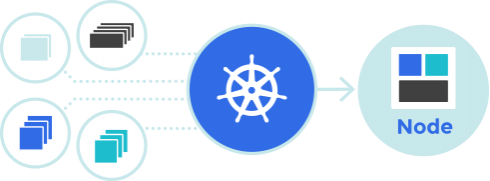
Google announced it is bringing the Kubernetes Engine experience to on-premise infrastructure with the announcement of GKE On-Prem as part of its Cloud Services Platform at its Google Cloud Next 2018 conference in San Francisco today. GKE On-Prem is being released as an alpha version, and is designed to deploy Kubernetes in an environment of your choice.
“We have seen with Kubernetes how much consistency matters. The idea of write once, run anywhere pulled users and partners to its community. Cloud Services Platform takes consistency further. Portability isn’t enough. Users want consistent experience for they can train their team once, and run anywhere,” Chen Goldberg, director of engineering for Kubernetes Engine & Kubernetes, Istio and Cloud Services Platform at Google Cloud Platform, said in a press conference before the conference.
According to the company, GKE On-Prem features:
- Multi-cluster registration and upgrade management
- Monitoring and logging with Stackdriver integration
- Hybrid identity and access management
- GCP Marketplace for Kubernetes apps
- Unified cluster management for GCP and on-prem
- Enterprise-grade support
“Now, with GKE On-Prem, you can begin to modernize existing apps on-premise, without necessarily moving to the cloud. You gain control of your journey to the cloud at your own pace,” Urs Hölzle, senior vice president of technical infrastructure at Google, wrote in a post.
Google also announced the alpha version of GKE Policy Management solution for providing centralized capabilities for admins to configure Kubernetes. “With GKE Policy Management, Kubernetes administrators create a single source of truth for their policies that automatically syncs with any enrolled cluster. GKE Policy Management supports policies stored as definitions in a repository, and can also use your existing Google Cloud IAM policies to make it simple to secure your clusters,” Hölzle wrote.
To improve operations, Google announced Stackdriver Service Monitoring designed to provide a real-time bird’s eye view of an environment, service level objective monitoring, and a service dashboard.
Other features include a GKE serverless add-on for running serverless workloads on Kubernetes Engine, and Knative, open-source serverless components to enable the GKE serverless add-on.
“In the decade since cloud computing became mainstream, it’s captured the hearts and minds of developers and enterprises everywhere. But for most IT organizations, cloud is still but a glimmer of what it could be — or what it should be,” wrote Hölzle. “With Cloud Services Platform, we bring the benefits of the cloud to you, no matter where you deploy for IT infrastructure today — or tomorrow.”








